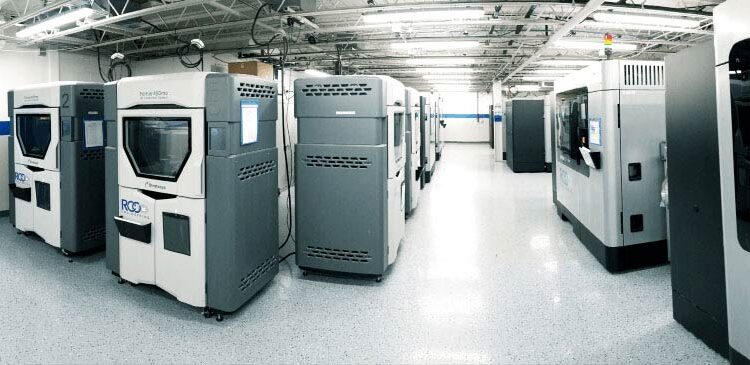Additive manufacturing, also known as 3D printing, has emerged as a groundbreaking technology with transformative potential in the healthcare industry. Its ability to fabricate complex, customized objects layer by layer has led to innovative applications across various medical fields, revolutionizing patient care, research, and medical device development. This article will explore seven innovative applications of additive manufacturing in healthcare, highlighting its diverse capabilities and significant impact on the medical landscape.
1. Patient-Specific Implants and Prosthetics
One of the most remarkable applications of additive manufacturing in healthcare is the production of patient-specific implants and prosthetics. By utilizing patient imaging data, such as CT scans or MRI images, medical professionals can design and fabricate implants and prosthetic devices tailored to individual anatomical specifications. This personalized approach ensures optimal fit, functionality, and comfort for patients, leading to improved clinical outcomes and enhanced quality of life. Additive manufacturing enables the creation of intricate, lightweight structures with bio-compatible materials, allowing for the development of advanced implants for orthopedic, dental, and cranio-maxillofacial surgeries.
2. Customized Surgical Guides and Instruments
Additive manufacturing has revolutionized surgical planning and execution by facilitating the production of customized surgical guides and instruments. Surgeons can leverage 3D-printed guides based on preoperative imaging data to navigate complex anatomical structures with precision during procedures. These patient-specific guides assist surgeons in achieving accurate implant placement, reducing surgical errors, and minimizing operating time. Additionally, additive manufacturing enables the fabrication of specialized surgical instruments tailored to unique patient requirements, enhancing procedural efficiency and safety. This innovative approach enhances surgical outcomes and contributes to the advancement of minimally invasive surgical techniques.
3. Bio-Modeling and Surgical Simulation
Bio-modeling and surgical simulation are critical components of medical education and training, and additive manufacturing plays a pivotal role in this domain. Medical institutions utilize 3D printing technology to produce anatomically accurate models of patient-specific anatomies, pathology, and surgical scenarios. These lifelike models enable medical students, residents, and practicing surgeons to enhance their understanding of complex anatomical structures and surgical procedures through hands-on experience. Moreover, surgical simulation using 3D-printed models allows surgeons to practice and refine their skills in a risk-free environment before performing procedures on actual patients. This immersive training approach improves surgical proficiency, reduces learning curves, and enhances patient safety.
4. Drug Delivery Systems and Personalized Medications
Additive manufacturing has opened new possibilities in drug delivery systems and personalized medication formulations. Researchers are exploring 3D printing technology to develop patient-specific drug delivery devices, such as oral tablets, transdermal patches, and implantable drug-eluting devices. These customized drug delivery systems can optimize therapeutic efficacy, minimize side effects, and improve patient compliance by tailoring medication dosages and release profiles to individual patient needs. Additionally, additive manufacturing enables the creation of complex, multi-drug formulations with precise control over drug release kinetics, opening avenues for personalized medicine and targeted therapies in healthcare.
5. Tissue Engineering and Organ Fabrication
Tissue engineering and organ fabrication represent groundbreaking areas of research where additive manufacturing holds immense potential. Scientists are harnessing 3D printing technology to create bio-compatible scaffolds and structures for tissue regeneration and organ transplantation. By layering bio-compatible materials and living cells, researchers can fabricate intricate tissue constructs with vascular networks, mimicking the architecture and functionality of native tissues and organs. This approach holds promise for regenerating damaged tissues, treating organ failure, and, ultimately, overcoming the shortage of donor organs for transplantation. Additive manufacturing’s ability to produce patient-specific tissues and organs has the potential to revolutionize regenerative medicine and personalized healthcare.
6. Point-of-Care Manufacturing and Medical Device Prototyping
Point-of-care manufacturing and medical device prototyping represent revolutionary advancements in healthcare facilitated by the capabilities of additive manufacturing services. This cutting-edge technology enables healthcare professionals to rapidly produce customized medical devices and components directly at the point of need, reducing lead times and enhancing patient care. Manufacturing services empower clinicians to iterate and refine prototypes quickly, accelerating the development process and fostering innovation in medical device design. By harnessing the flexibility and precision of additive manufacturing, healthcare providers can address specific patient needs with tailored solutions, improving treatment outcomes and patient satisfaction. As the healthcare industry continues to embrace manufacturing services, the potential for point-of-care manufacturing and medical device prototyping to revolutionize healthcare delivery and patient outcomes is vast and promising.
7. Patient-Specific Anatomical Models for Preoperative Planning
With the use of patient-specific anatomical models, additive manufacturing is transforming preoperative planning. Preoperative visualization of intricate anatomical features and pathologies is made possible with 3D-printed anatomical models created from patient imaging data. Surgeons can practice and plan their procedures with great precision because to these high-fidelity models, which show them the patient’s anatomy, spatial connections, and possible difficulties. Surgeons may improve patient safety, refine surgical methods, and predict problems by running surgical operations on patient-specific models. Due to its ability to produce very realistic anatomical models, additive manufacturing has become an integral part of contemporary surgical practice, greatly improving both surgical results and patient care.
Conclusion
Additive manufacturing has emerged as a game-changer in healthcare, offering innovative solutions to complex medical challenges and transforming patient care delivery. From patient-specific implants and surgical guides to tissue engineering and organ fabrication, 3D printing technology is revolutionizing various aspects of healthcare, enabling personalized treatments, enhancing surgical precision, and advancing medical research. By harnessing the capabilities of additive manufacturing, healthcare providers and researchers can unlock new opportunities for innovation, improve clinical outcomes, and, ultimately, enhance the quality of life for patients worldwide. As the technology continues to evolve, its impact on.







